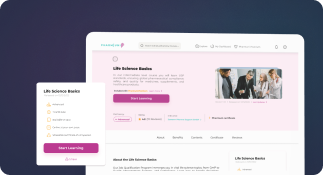CSV Master Plan (Computer System Validation Master Plan)
Definition
A CSV Master Plan, or Computer System Validation Master Plan, is a high-level document that outlines the strategy, scope, and responsibilities for validating computerized systems in regulated environments, particularly in the pharmaceutical, biotechnology, and life sciences industries. It provides a structured approach to ensure that all computer systems used in GxP (Good Practice) processes are validated in compliance with regulatory requirements such as FDA 21 CFR Part 11 and EU Annex 11.
Detailed Explanation
The CSV Master Plan is a cornerstone of any compliant validation program within regulated industries. It serves as a roadmap for the validation of computer systems that impact product quality, patient safety, or data integrity. Similar in intent to a Validation Master Plan (VMP) in pharma, the CSV Master Plan focuses specifically on computerized systems and their lifecycle.
Purpose and Importance
The primary purpose of the CSV Master Plan is to provide a comprehensive framework for the validation of all computerized systems that support GxP activities. It ensures consistency, traceability, and compliance across systems and sites. Regulatory agencies such as the FDA and EMA expect organizations to have a documented validation strategy to demonstrate control over their computerized systems.
Key Components of a CSV Master Plan
- Scope and Objectives: Defines which systems are covered and the overall goals of the validation effort.
- Validation Strategy: Describes the methodology and risk-based approach to validation (e.g., GAMP 5).
- System Inventory: A list of all GxP-relevant systems, categorized by criticality and validation status.
- Roles and Responsibilities: Identifies stakeholders such as QA, IT, validation engineers, and business owners.
- Lifecycle Approach: Outlines phases from system selection, development, testing, deployment, to retirement.
- Documentation Requirements: Specifies required deliverables such as URS, FRS, IQ, OQ, PQ, and traceability matrices.
- Change Control and Periodic Review: Describes how validated systems are maintained in a compliant state over time.
CSV Master Plan vs. Validation Master Plan (VMP)
While both documents serve to guide validation activities, the CSV Master Plan is focused specifically on computerized systems, whereas the Validation Master Plan (VMP) in pharma often encompasses a broader range of validation activities, including equipment, processes, utilities, and facilities. In many organizations, the CSV Master Plan may be a sub-component of the overarching VMP.
Example Use Case
Consider a pharmaceutical manufacturer implementing a Laboratory Information Management System (LIMS). Before deployment, the company would reference its CSV Master Plan to determine the validation approach, assign responsibilities, and ensure that all documentation and testing activities meet regulatory expectations. The plan would guide the validation lifecycle from user requirements through performance qualification and ongoing maintenance.
Regulatory Context and Compliance
Regulatory bodies such as the U.S. Food and Drug Administration (FDA), the European Medicines Agency (EMA), and the World Health Organization (WHO) emphasize the importance of validated systems in ensuring data integrity and product quality. The CSV Master Plan helps demonstrate that an organization has a systematic approach to compliance and risk management.
Benefits of a Well-Structured CSV Master Plan
- Ensures regulatory compliance with FDA 21 CFR Part 11, EU Annex 11, and other global standards
- Facilitates efficient project planning and resource allocation
- Improves audit readiness and reduces compliance risks
- Enhances communication among cross-functional teams
- Provides a repeatable framework for future validation projects



